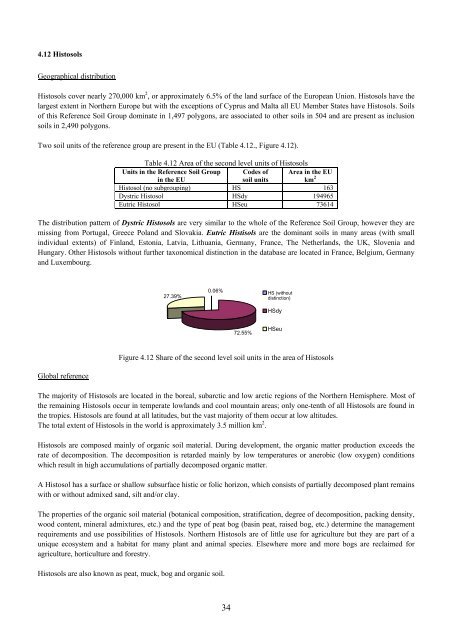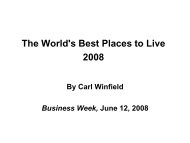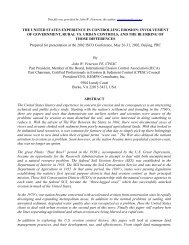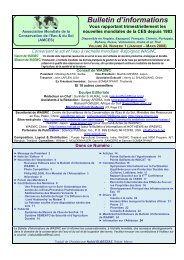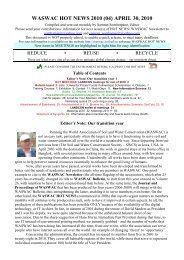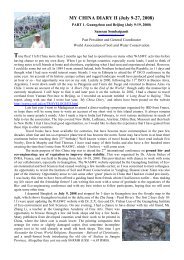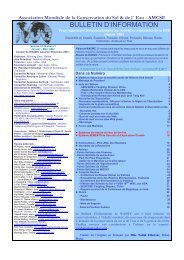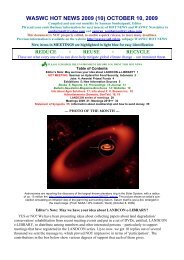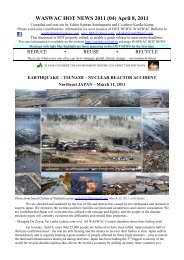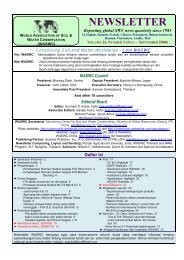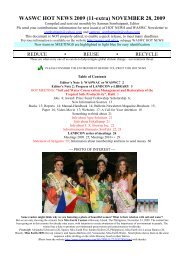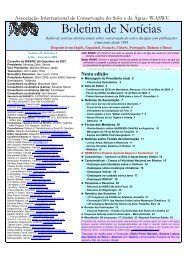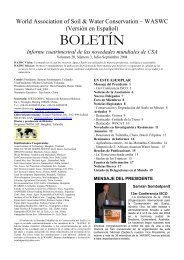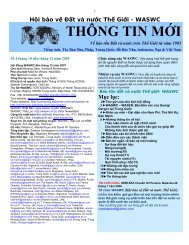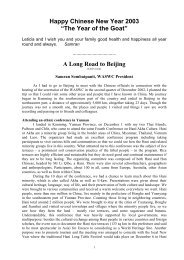Soils of the European Union - European Soil Portal - Europa
Soils of the European Union - European Soil Portal - Europa
Soils of the European Union - European Soil Portal - Europa
You also want an ePaper? Increase the reach of your titles
YUMPU automatically turns print PDFs into web optimized ePapers that Google loves.
4.12 HistosolsGeographical distributionHistosols cover nearly 270,000 km 2 , or approximately 6.5% <strong>of</strong> <strong>the</strong> land surface <strong>of</strong> <strong>the</strong> <strong>European</strong> <strong>Union</strong>. Histosols have <strong>the</strong>largest extent in Nor<strong>the</strong>rn Europe but with <strong>the</strong> exceptions <strong>of</strong> Cyprus and Malta all EU Member States have Histosols. <strong><strong>Soil</strong>s</strong><strong>of</strong> this Reference <strong>Soil</strong> Group dominate in 1,497 polygons, are associated to o<strong>the</strong>r soils in 504 and are present as inclusionsoils in 2,490 polygons.Two soil units <strong>of</strong> <strong>the</strong> reference group are present in <strong>the</strong> EU (Table 4.12., Figure 4.12).Table 4.12 Area <strong>of</strong> <strong>the</strong> second level units <strong>of</strong> HistosolsUnits in <strong>the</strong> Reference <strong>Soil</strong> Groupin <strong>the</strong> EUCodes <strong>of</strong>soil unitsArea in <strong>the</strong> EUkm 2Histosol (no subgrouping) HS 163Dystric Histosol HSdy 194965Eutric Histosol HSeu 73614The distribution pattern <strong>of</strong> Dystric Histosols are very similar to <strong>the</strong> whole <strong>of</strong> <strong>the</strong> Reference <strong>Soil</strong> Group, however <strong>the</strong>y aremissing from Portugal, Greece Poland and Slovakia. Eutric Histisols are <strong>the</strong> dominant soils in many areas (with smallindividual extents) <strong>of</strong> Finland, Estonia, Latvia, Lithuania, Germany, France, The Ne<strong>the</strong>rlands, <strong>the</strong> UK, Slovenia andHungary. O<strong>the</strong>r Histosols without fur<strong>the</strong>r taxonomical distinction in <strong>the</strong> database are located in France, Belgium, Germanyand Luxembourg.27.39%0.06% HS (withoutdistinction)HSdy72.55%HSeuFigure 4.12 Share <strong>of</strong> <strong>the</strong> second level soil units in <strong>the</strong> area <strong>of</strong> HistosolsGlobal referenceThe majority <strong>of</strong> Histosols are located in <strong>the</strong> boreal, subarctic and low arctic regions <strong>of</strong> <strong>the</strong> Nor<strong>the</strong>rn Hemisphere. Most <strong>of</strong><strong>the</strong> remaining Histosols occur in temperate lowlands and cool mountain areas; only one-tenth <strong>of</strong> all Histosols are found in<strong>the</strong> tropics. Histosols are found at all latitudes, but <strong>the</strong> vast majority <strong>of</strong> <strong>the</strong>m occur at low altitudes.The total extent <strong>of</strong> Histosols in <strong>the</strong> world is approximately 3.5 million km 2 .Histosols are composed mainly <strong>of</strong> organic soil material. During development, <strong>the</strong> organic matter production exceeds <strong>the</strong>rate <strong>of</strong> decomposition. The decomposition is retarded mainly by low temperatures or anerobic (low oxygen) conditionswhich result in high accumulations <strong>of</strong> partially decomposed organic matter.A Histosol has a surface or shallow subsurface histic or folic horizon, which consists <strong>of</strong> partially decomposed plant remainswith or without admixed sand, silt and/or clay.The properties <strong>of</strong> <strong>the</strong> organic soil material (botanical composition, stratification, degree <strong>of</strong> decomposition, packing density,wood content, mineral admixtures, etc.) and <strong>the</strong> type <strong>of</strong> peat bog (basin peat, raised bog, etc.) determine <strong>the</strong> managementrequirements and use possibilities <strong>of</strong> Histosols. Nor<strong>the</strong>rn Histosols are <strong>of</strong> little use for agriculture but <strong>the</strong>y are part <strong>of</strong> aunique ecosystem and a habitat for many plant and animal species. Elsewhere more and more bogs are reclaimed foragriculture, horticulture and forestry.Histosols are also known as peat, muck, bog and organic soil.34


